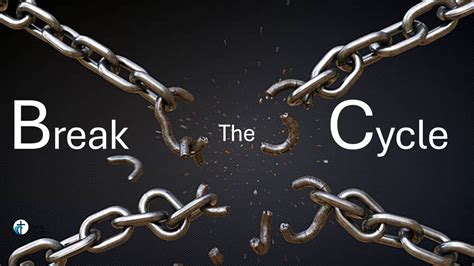How to break a strength plateau in compound lifts for peak performance?

Understanding and Tackling Strength Plateaus
Hitting a strength plateau is a common and frustrating experience for anyone dedicated to compound lifts like squats, deadlifts, and bench presses. It’s that point where, despite consistent effort, your progress in terms of weight, reps, or sets seems to grind to a halt. While disheartening, a plateau isn’t a sign of failure; it’s often an indication that your body has adapted to your current stimulus, and it’s time to shake things up.
To break through these barriers and continue your journey towards peak performance, a multi-faceted approach is required. This involves critically evaluating your training, recovery, and even your mindset. Let’s delve into actionable strategies to reignite your progress.

The Foundations: Form and Recovery
Perfecting Your Form
Before making any drastic changes to your programming, rigorously review your lifting technique. Poor form is not only a common cause of plateaus due to inefficient movement patterns but also a significant risk factor for injury. A slight shift in bar path, hip drive, or bracing can unlock new strength potential. Consider:
- Video Analysis: Record yourself from different angles and compare it against expert demonstrations.
- Coaching Feedback: A knowledgeable coach can spot subtle flaws you might miss.
- Conscious Practice: Focus on perfect execution even with lighter weights.
Prioritizing Recovery: The Unsung Hero
Often overlooked, inadequate recovery can be the silent killer of progress. Your muscles don’t grow during the workout; they grow during rest. Ensure you’re giving your body ample time and resources to repair and rebuild.
- Sleep: Aim for 7-9 hours of quality sleep per night. This is when vital hormones for muscle repair and growth are released.
- Nutrition: A caloric surplus (or maintenance for specific goals) with sufficient protein, complex carbohydrates, and healthy fats is crucial for fueling workouts and recovery.
- Stress Management: Chronic stress, whether physical or mental, elevates cortisol, which can hinder muscle growth and recovery.
- Hydration: Adequate water intake supports all bodily functions, including nutrient transport and joint health.
Training Adjustments for Breakthroughs
Once your form is solid and recovery is dialed in, it’s time to manipulate your training variables. Progressive overload is fundamental, but it’s not always about adding more weight.

Manipulating Progressive Overload Variables
- Volume (Sets x Reps): Try increasing your total working sets or reps within a workout. This builds work capacity and hypertrophy, which eventually translates to strength. Example: Instead of 3×5, try 5×3 or 4×6.
- Intensity (Weight): While you’re stuck, you might need to drop the weight temporarily to build foundational strength, or strategically increase it for single reps.
- Frequency: Increasing how often you train a specific lift (e.g., squatting twice a week instead of once) can provide more practice and stimulus, but requires careful management of overall volume and recovery.
- Time Under Tension: Slowing down the eccentric (lowering) phase of a lift can increase muscle damage and growth stimulus.
- Reduced Rest Times: Gradually shortening rest intervals between sets can improve muscular endurance and work capacity.
Strategic Deloads and Periodization
A deload week, where you significantly reduce volume and/or intensity, can be incredibly effective. It allows your body to fully recover, reduces accumulated fatigue, and often leads to a surge in strength upon returning to heavier training. Implement deloads every 4-8 weeks, depending on your training intensity and individual recovery.
Periodization involves structuring your training into cycles with varying intensities and volumes. Linear periodization (gradually increasing intensity and decreasing volume over time) or undulating periodization (varying intensity and volume within a week or microcycle) can help continuously challenge your body and prevent adaptation.

Incorporating Accessory Work and Variations
Accessory exercises target supporting muscles that contribute to your main lifts. Weak hamstrings might hinder your deadlift, or weak triceps your bench press. Identify your weakest links and add specific exercises to strengthen them (e.g., good mornings, glute-ham raises, dumbbell rows, triceps extensions).
Lift variations also provide a new stimulus without straying too far from the main movement. Examples include:
- Squat variations: Front squats, pause squats, safety bar squats.
- Deadlift variations: Romanian deadlifts (RDLs), deficit deadlifts, sumo deadlifts.
- Bench press variations: Close-grip bench press, pause bench, incline press, floor press.

Advanced Techniques and Mindset
Intensity Techniques
For advanced lifters, incorporating intensity techniques can provide an extra push:
- Drop Sets: Perform a set to failure, immediately reduce the weight, and continue for more reps.
- Rest-Pause Sets: Perform a set to failure, rest briefly (10-20 seconds), and then perform more reps with the same weight.
- Cluster Sets: Break a set into mini-sets with short rests in between (e.g., 3 reps, rest 20s, 3 reps, rest 20s, 3 reps).
Mental Toughness and Goal Setting
Don’t underestimate the power of your mind. Visualizing success, maintaining a positive attitude, and setting clear, achievable goals can significantly impact your performance. Sometimes, a plateau is as much mental as it is physical. Believe in your ability to push past it.

Conclusion
Breaking a strength plateau in compound lifts requires patience, strategic planning, and a willingness to adapt. By meticulously perfecting your form, prioritizing recovery, intelligently manipulating training variables, incorporating variations and accessory work, and maintaining a strong mindset, you can overcome these obstacles. Remember, consistency and smart training are key to unlocking your true strength potential and achieving peak performance. Analyze, adapt, and keep pushing forward!









